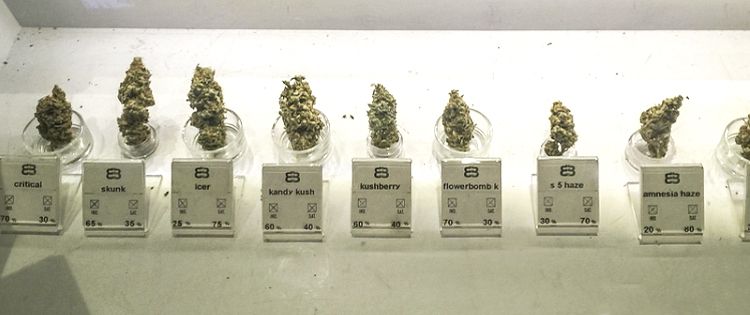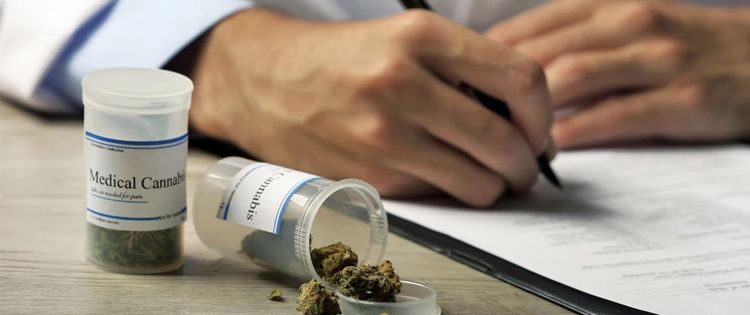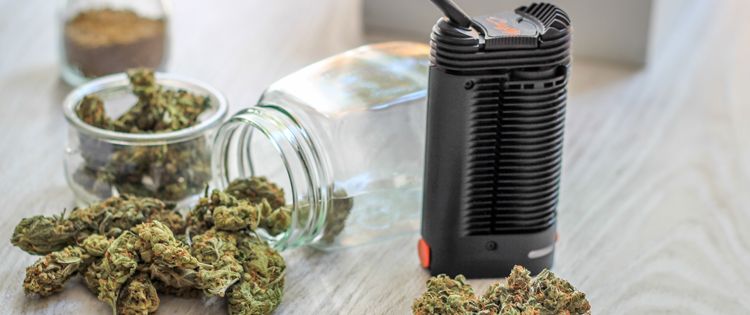Cancer is one of the world’s most deadly, and terrifying killers. The World Health Organization estimates that 8.2 million people die from cancer around the world each year, that’s about 13% of all deaths worldwide! Not only is the disease traumatic, but the treatment itself can also be a brutal experience.
Many years ago, a very clued-in lecturer in Cancer Oncology once said to me-
“Cancer can be a complex illness. Sadly, complex illnesses often require complex treatments.”
Ultimately, the therapeutic goal of treating cancer is to reduce mortality and improve quality of life.
Unfortunately, the reality of the treatments itself often provides a whole new list of worries for patient’s when faced with the prospect of surgery, radiation and chemotherapy. Not to mention the plethora of drugs and their side-effects.
Chemotherapy’s Main Side Effect
Chemotherapy is currently the main treatment for Cancer and this has many side effects including Chemo-induced Vomiting and Nausea (CIVN).
This is one of the main symptoms from Chemo treatment and can be debilitating or lethal in itself. And it is why Scientists are focused on finding the best ways to counter nausea to improve the recovery of patients undergoing cancer treatment.
The solution is pointing in the direction of, believe it or not, but Cannabis. This plant’s medical properties has surprisingly proven to help cancer patients battle nausea.

In this article, I am going to explore how this plant in medical terms can assist Chemo-induced Vomiting and Nausea and lead to reduced mortality and improve quality of life of patients.
Chemotherapy Induced Nausea and Vomiting
An estimation of over 4 million people per year was currently receiving chemotherapy. It is one of our current first-line forms of treatment, however, there are some serious side-effects that become dragged along as extra baggage. The biggest- and most devastating side effect is the excessive nausea and vomiting that often follows treatment.
This is what we call- Chemotherapy Induced Nausea and Vomiting (CINV), and contributes largely to many seeking to discontinue their treatment, due to the reduced quality of life sufferers have to endure.
Sadly, this is also a very common occurrence.
In Fact, a 2014 CINV drug analysis report stated-
“Usually 25% to 30% patients with cancer receive chemotherapy as a treatment option and 70% to 80% of these patients undergoing chemotherapy exhibit nausea and vomiting as major symptoms.”

Image source: https://www.herontx.com/sites/default/files/images/CINV-70-80-1.png
That’s right. Chemo-induced Nausea and Vomiting (CINV) affects about 70-80% of all Patients Undergoing Chemotherapy.
That proves a very huge barrier when making sure people are able to continue their treatment and eventually achieve a better prognosis.
Options Available to fight CINV?
Currently, there is a large selection of antiemetic (anti-nausea) medications to choose from when attempting to treat CINV. However, problems currently exist which make it difficult to manage.
The problem mainly lies in the execution; how we actually take the medicine, and how the body absorbs it.
For example, it can often take a while for a tablet to go through the system and achieve its therapeutic effect- which leads to delayed relief from the nausea. Not only that, once the vomiting begins, it is difficult to keep the medication down long enough to do its job.

Intravenous and injectable options exist- however come with their own set of risk factors. This includes risk of infection, additional pain- and is difficult to access at short notice behind the ‘red tape’ of hospital guidelines. The antiemetic drugs themselves need to be strong enough to counteract the CINV…which means they may also add to the list of side effects.
So a question that I prompt you to consider is….
What if you could bypass those problems?
Cannabis and Nausea- What does the literature say?
Vomiting and nausea are a naturally-designed mechanism within our bodies used for protection. It acts as a primitive instinct of defense when attempting to expel noxious substances in order to protect our organs. More often than not, it is the first sign of something going terribly wrong.
However, when experienced in excessive amounts- it can be extremely harmful to our health…both mentally and physically.
To date, Cannabis is one of our oldest remedies used to historically treat nausea.
There is a growing body of literature that has begun to support the placement of cannabis within cancer therapeutics… Not only because it opens possibilities to cancer treatment, clinical trials have demonstrated its therapeutic potential to treat pathologically-induced nausea as well.
With the endocannabinoid system reaching the light of modern medicine, it’s placement with how it influences our body’s natural mechanism for emesis was updated within a 2015 review, which stated-
“In clinical trials, cannabis-based medicines have been found to be effective anti-emetics and even surpass some modern treatments in their potential to alleviate nausea.”

However, it is important to note that within a separate analysis, Dr. Harold Kalant, pointed out that the effectiveness of cannabis has been mainly trailed against older-generation drugs (such as Stemitil) and still lacks sufficient evidence to compare its aptitude against newer generation drugs (such as odansetron).
In summary, it has proven to be better than some- and maybe not others. A full assessment of your options through a trained professional would still be recommended to ensure that the option is the right one for you. However, there is a general agreement in most upcoming research, that Cannabis is opening a highly promising door for finding new and more effective ways to treat one of the most common- and debilitating aspects of chemotherapy.
The benefits of treating CINV with Cannabis
When faced with the challenge of improving the quality of life in cancer sufferers, therapeutic goals that target the most debilitating of symptoms seems pretty straight forward. Unfortunately, CINV wouldn’t be such a significant problem if we already had the solution clearly in front of us.
Powerful antiemetic medications exist, however, the problems we just discussed can get in the way of making them work universally for everyone presents a challenge. It has been suggested that there is much benefit in targeting the endocannabinoid system into anti-nausea treatment, as they influence the body in a different way than conventional medicines.
As the endocannabinoid system is naturally found throughout the body, this provides a door into different pathways we can use to administer cannabinoid medicines- whether we choose to consume it, take it as a spray or suspension, apply it topically…even inhale it.
We are not isolated to only one method.
And unlike many types of medications- cannabis doesn’t have to be heavily metabolized by the body before it is directed to the correct system. This makes it easier- and quicker before we see the effects.
THC directly impacts receptors in the brain which can inhibit the “vomit center” of the CNS.
Taking Cannabis through inhaling- particularly in the form of vaping (inhaling cannabinoids such as THC, or CBD in the form of pure vapour through an oil- rather than as a by-product of smoking raw materials) is considered a safe and effective method to gain the benefits of the plant. Because it bypasses the usual pathway of going through the GI tract- you can take it without worrying about throwing it back up again. And the effect is far more immediate- meaning you won’t have to wait overlong for the effect to take place. This method also allows for larger quantities of the chemicals to be absorbed.

A current example of an existing THC antiemetic is Dronabinol, which has been indicated for patients who have not responded well to any other form of anti-nausea treatment. It is noted to be quite effective in treating nausea- however still causes some psychoactive side-effects such as poor memory, euphoria, dizziness and occasionally hallucinations.
Currently, research is being conducted on the use of cannabidiol for its therapeutic properties as it has shown to affect the same receptor tree as THC- but induce far less psychoactive side-effects.
The future of Complementing Chemotherapy with Cannabis
The evidence that highlights the healing properties of cannabis in treating complex illness is only growing larger with each passing year.
That being said, we still do not know the whole picture of Cannabis and our body, meaning that potential long-term impacts on our health and wellbeing may be unknown. While the findings are proving promising- much more research needs to be completed before cannabis can be recommended as a front-line form of primary treatment for conditions such as CINV.
Cancer is a very delicate disease process- with the life expectancy and quality of life of sufferers already in dire circumstances. This makes clinically trailing the treatments a little difficult under the sensitive climate of difficult treatment and palliative care.
Another footfall we face is that most of the promising research we know are currently outdated and was mostly based on animal studies. This means we do not know the full picture of cannabis and its impact on curing disease within Humans.
However, as the move towards the legalization of marijuana takes its first strides into the world, this holds a promising light in the future of studying- and improving our understanding of cannabis and how we may, eventually in the close future, see the day a doctor can confidently recommend it to improve the health and wellbeing of those who endure one of the hardest illnesses known to man.
Would you be open to the idea of using cannabis to improve health and wellbeing of cancer patients?
Share your thoughts below.
- Going Anti-Malaria with Marijuana - March 17, 2017
- Wasting Away- How Cannabis Helps AIDS Patients - February 10, 2017
- Cannabis: The Hidden Cure for Bone Disease - January 18, 2017


